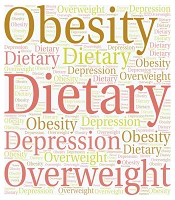According to the World Health Organization (WHO), In 2022, 1 in 8 people globally were living with obesity. Among 2.5 billion adults who were overweight, 890 million were classified as living with obesity. Additionally, 43% of adults aged 18 and over were overweight, while 16% were living with obesity. Managing weight and preventing obesity can alleviate the burden of non-communicable diseases (NCDs) and reduce the substantial costs they impose on healthcare systems (1).
The increasing prevalence of overweight and obesity globally highlights the need to identify and address their key risk factors. Obesity is a complex condition influenced by biological, behavioral, and environmental factors. Recent research indicates that lifestyle changes over the decades significantly contribute to the obesity epidemic. Major risk factors include unhealthy dietary habits, high-calorie food consumption, sedentary lifestyles, musculoskeletal disorders, depression, and socio-economic status (1-3). The prevalence of obesity in the Ravansar cohort study is notable (26.7% in women and 35.8% in men), with overweight prevalence at 16.5% and 43.5%, respectively. Given its significant contribution to NCDs, effective interventions are imperative.
A study involving 10,047 Kurdish adults from the non-communicable diseases (RaNCD) group analyzed the direct and indirect influences of various factors on overweight and obesity. It was found that musculoskeletal diseases and depression contribute indirectly to increased obesity and overweight by diminishing physical activity and reducing sleep duration. The study indicated that the indirect impact of socio-economic status on overweight or obesity is more significant than its direct effect. Overall, dietary patterns and physical activity were identified as two mediating risk factors for obesity, influenced by socio-economic status variables, depression, musculoskeletal disorders, smoking status, and sleep duration, ultimately leading to overweight and obesity. This model effectively illustrates all contributing factors and their effects on obesity, thus aiding in the development of targeted interventions within the health system (4).
The Ravansar Cohort Study assessed the prevalence of NCDs among 10 occupational groups, revealing that managerial roles had the highest rates of CVD (18.62%) and type 2 diabetes (14% in technical/professional roles). Musculoskeletal disorders were more common in agriculture and related fields, while managers had the highest Body Mass Index (BMI). The study concluded that lifestyle changes, particularly weight loss and increased physical activity aligned with job requirements, can help reduce NCDs and improve health outcomes (5).
An evaluation of factors related to overweight and obesity among women in the RaNCD cohort study revealed that postmenopausal women had significantly higher mean body fat percentages and visceral fat levels compared to premenopausal women. Additionally, the direct association between higher socioeconomic status (SES) and healthy dietary patterns was more pronounced in premenopausal women than in postmenopausal women (6).
A study was carried out on Kurdish adults in western Iran to establish optimal cutoff points for BMI, waist circumference (WC), and waist-to-hip ratio (WHR) for predicting metabolic syndrome (MetS). The research identified these cutoff points specific to the region. The results indicated that individuals with BMI, WC, and WHR s exceeding these cutoff points had a higher risk of developing MetS (7).
Addressing the obesity epidemic requires a comprehensive approach that combines public health strategies, socio-economic interventions, and individual behavior change. Key recommendations include improving follow-up for treatment adherence, promoting balanced diets rich in fruits and vegetables while limiting processed foods, and utilizing insights from cohort studies for evidence-based interventions. Public health campaigns should raise awareness about lifestyle choices and obesity monitoring, while initiatives must encourage physical activity through low-cost options like walking paths and public sports events. Enhancing access to mental health services and addressing economic disparities through education and resource provision are also essential. Collaboration among government entities, healthcare providers, and community organizations is vital for implementing these coordinated policies to alleviate the burden of obesity and related diseases.
